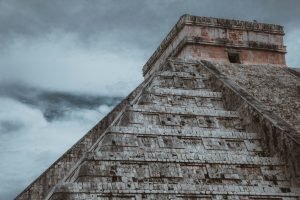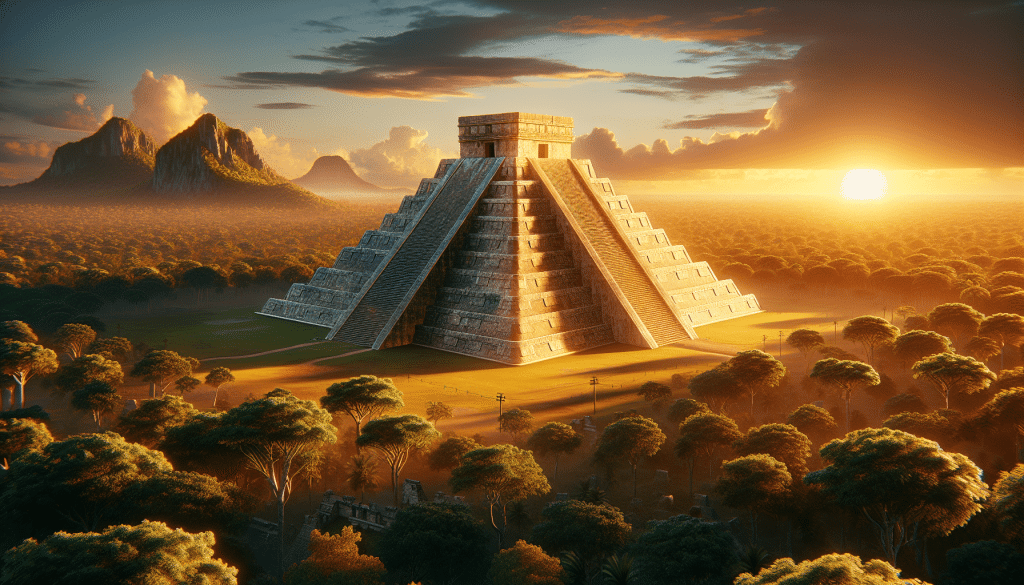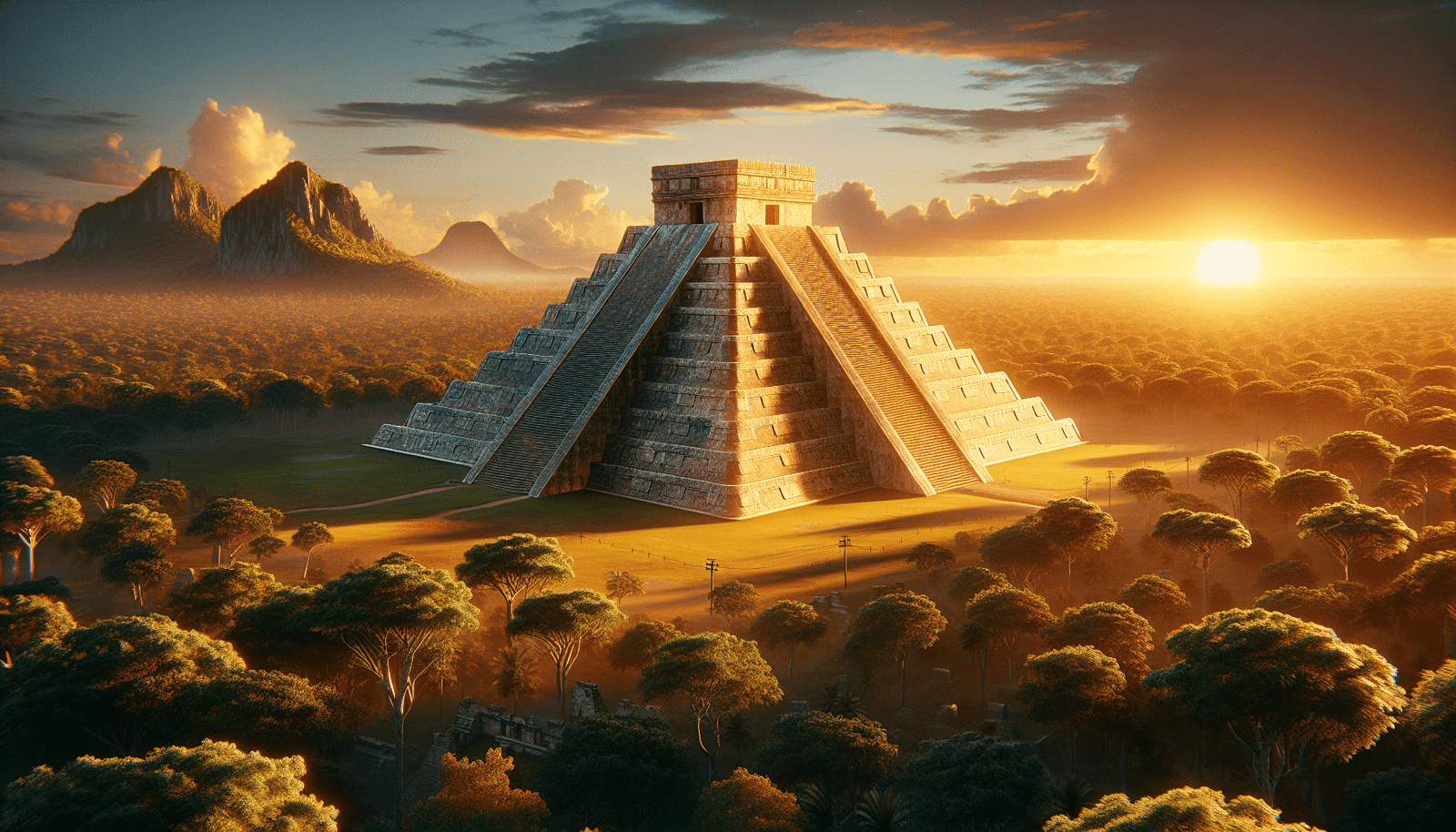Embark on a journey through time as you explore the captivating Mayan ruins scattered throughout Mexico. In this article, “Must-Visit Mayan Ruins In Mexico,” you will discover the ancient architectural wonders that offer a glimpse into a lost civilization’s rich history. You’ll uncover the tales etched into the stones of Chichen Itza, the grandeur of Tulum overlooking the Caribbean Sea, and the less-traveled but equally mesmerizing ruins of Palenque. Prepare to be spellbound by the incredible artistry and ingenuity of the Mayan culture, making each site a must-visit on your Mexican adventure. Have you ever wondered what it would be like to walk in the footsteps of ancient civilizations? If you’re a history buff, an archaeology enthusiast, or simply a traveler seeking unique experiences, then the Mayan ruins in Mexico are definitely a must-visit. These ancient sites not only give you a glimpse into a fascinating and sophisticated culture but also allow you to explore breathtaking landscapes, architectural marvels, and mysterious histories.
Why Visit Mayan Ruins in Mexico?
Before we dive into the details of specific ruins, let’s talk about why Mayan ruins are so significant. The Maya civilization, which peaked between 250 and 900 AD, was known for its advancements in writing, art, architecture, mathematics, and astronomy. By visiting these ruins, you get an unparalleled look into one of the most advanced civilizations of the pre-Columbian Americas. Plus, the locations of these sites—often surrounded by dense jungle or perched on high cliffs—make them incredibly scenic and unforgettable destinations.
Cultural and Historical Value
The Mayan civilization has left behind a rich legacy that continues to be studied and admired today. From intricate hieroglyphics to towering pyramids, these ruins offer a window into ancient ways of life, religious practices, and social structure. Understanding the culture and history of the Maya can provide you with a deeper appreciation for their ingenuity and contributions to human knowledge.
Natural Beauty and Adventure
Many of the Mayan ruins are situated in naturally stunning locations, such as dense jungles, near cenotes (natural sinkholes), or on coastal cliffs. This makes visiting these sites an adventurous endeavor as well as an educational one. Whether you enjoy trekking through lush greenery, swimming in crystal-clear waters, or simply basking in breathtaking views, the settings of these ruins add an extra layer of enjoyment to your trip.
Must-Visit Mayan Ruins
Now, let’s get into the meat of the article: the must-visit Mayan ruins in Mexico. Each of these sites has its own unique charm and story, making them worth a visit.
Chichen Itza: The Iconic Wonder
If there’s a Mayan ruin you’ve probably heard of, it’s Chichen Itza. Located on the Yucatán Peninsula, this UNESCO World Heritage Site is famous for its impressive pyramid, El Castillo.
- El Castillo: Also known as the Temple of Kukulcan, this step pyramid stands about 98 feet tall and was used for astronomical purposes. Visit during the equinox to see a special shadow effect that looks like a serpent descending the steps.
- Cenote Sagrado: This sacred cenote was a site of human sacrifices to the gods. It’s both eerie and fascinating to look at.
- The Great Ball Court: The largest ball court ever discovered among the Mesoamerican ruins, measuring 545 feet long and 225 feet wide.
Tulum: Ruins by the Sea
Tulum is unique because it’s the only Mayan city built on a coastline. Perched on steep cliffs overlooking the Caribbean Sea, this site offers not just historical intrigue but also stunning ocean views.
- El Castillo: The central structure in Tulum, El Castillo served both as a temple and a lighthouse for incoming ships.
- The Temple of the Frescoes: This building features well-preserved frescoes depicting various gods and goddesses.
- Playa Ruinas: After exploring the ruins, take a break at the beach below. It’s one of the most picturesque spots in the area.
Palenque: The Jungle’s Mystery
Palenque is located in the state of Chiapas and is often praised for its well-preserved architectural elements. Surrounded by lush jungle, it’s an atmospheric site that feels like stepping back in time.
- Temple of the Inscriptions: This is Palenque’s largest pyramid and contains hieroglyphic inscriptions narrating the city’s history.
- The Palace: A sprawling complex that served as the residence of the Mayan elite. It includes several courtyards and aqueducts.
- The Queen’s Bath: A serene spot nearby with freshwater pools that were used for ceremonial purposes.
Uxmal: The City of the Three Times Built
Uxmal, located in the Puuc region of Yucatán, is another UNESCO World Heritage Site. It’s renowned for its ornate architecture and unique design elements.
- Pyramid of the Magician: This pyramid stands out due to its unusual oval shape and height of 115 feet. Legend says it was built in one night by a magical dwarf.
- Governor’s Palace: This structure is known for its length and the intricate mosaics that adorn its façade.
- Nunnery Quadrangle: Despite its name, this building complex was likely used for administrative purposes.

How to Prepare for Your Trip
Planning is essential to make the most of your visit to these amazing sites. Here are some tips to consider before you go.
When to Visit
- Timing: The best time to visit Mayan ruins is during the cooler months from November to April. Avoid the rainy season to ensure you have a comfortable experience.
- Time of Day: Try to visit early in the morning or late in the afternoon to avoid the crowds and the peak heat of the day.
What to Bring
- Comfortable Clothing: Breathable, light clothing and comfortable walking shoes are a must. A hat and sunglasses will help shield you from the sun.
- Water and Snacks: Many ruins are located in remote areas, so bring enough water and snacks to sustain you through your adventure.
- Camera: Don’t forget your camera or smartphone to capture the awe-inspiring sights.
Guided Tours vs. Solo Exploration
- Guided Tours: Opt for a guided tour if you want in-depth historical and cultural context. Many guides are knowledgeable locals who can offer insights you won’t find in a guidebook.
- Solo Exploration: If you prefer to explore at your own pace, make sure to do some research beforehand. Many sites have informational placards, but they might not give you the full story.
Etiquette and Preservation
It’s important to remember that you’re visiting ancient, sacred sites. Respecting the environment and the cultural heritage is crucial.
- Stay on Paths: Stick to established paths and avoid climbing on structures unless it’s explicitly allowed.
- No Littering: Always take your trash with you and dispose of it properly.
- Respect Artefacts: Do not touch or take anything from the sites. Even the smallest artefact can be incredibly valuable for historical research.

Local Food and Accommodations
Half the fun of visiting these ruins is experiencing the local culture, and that includes food and lodging.
Culinary Delights
Once you’ve worked up an appetite from all that exploring, you’ll want to savor some local flavors. Here’s what to look for:
- Poc Chuc: This is a marinated pork dish that’s typical of the Yucatán Peninsula.
- Tamales: Made from corn dough and stuffed with a variety of meats or vegetables, these are a staple in Mexican cuisine.
- Marquesitas: A type of crepe filled with grated cheese and various sweet fillings, perfect for a quick snack.
Lodging Options
You’ll find a range of accommodations close to most of the major ruin sites.
- Boutique Hotels: Often located in charming buildings and offering personalized service.
- Eco-Lodges: Great if you want to stay closer to nature.
- Resorts: For those who prefer a bit more luxury and amenities.
Further Adventures
After visiting the main sites, you might want to explore some lesser-known but equally fascinating ruins.
Ek Balam
Located about 30 minutes north of Valladolid, Ek Balam is less crowded but equally fascinating. The Acropolis is the main structure and offers a unique view of the surrounding jungle.
Coba
Coba is one of the few places where you can still climb ancient structures. The towering Nohoch Mul pyramid provides a stunning panoramic view.
Recommended Itinerary
To make the most of your visit, consider following this three-day itinerary.
Day 1: Chichen Itza and Cenotes
Start with an early visit to Chichen Itza to beat the crowds. Spend the afternoon visiting nearby cenotes like Cenote Ik Kil.
Day 2: Tulum and Beach Day
Explore the Tulum ruins in the morning, then spend the rest of the day relaxing on Playa Paraiso.
Day 3: Palenque
Travel to Palenque and spend the day exploring the site. Reserve some time to visit the surrounding jungle for a complete experience.
Final Thoughts
Exploring the Mayan ruins in Mexico is a deeply enriching experience that offers more than just a step back in time. It’s a journey through stunning landscapes, intricate art, and an incredibly advanced civilization. Whether you’re marveling at the architectural wonders or soaking in the natural beauty around you, these sites promise an unforgettable adventure.
So, are you ready to plan your trip? The Mayan ruins await!
